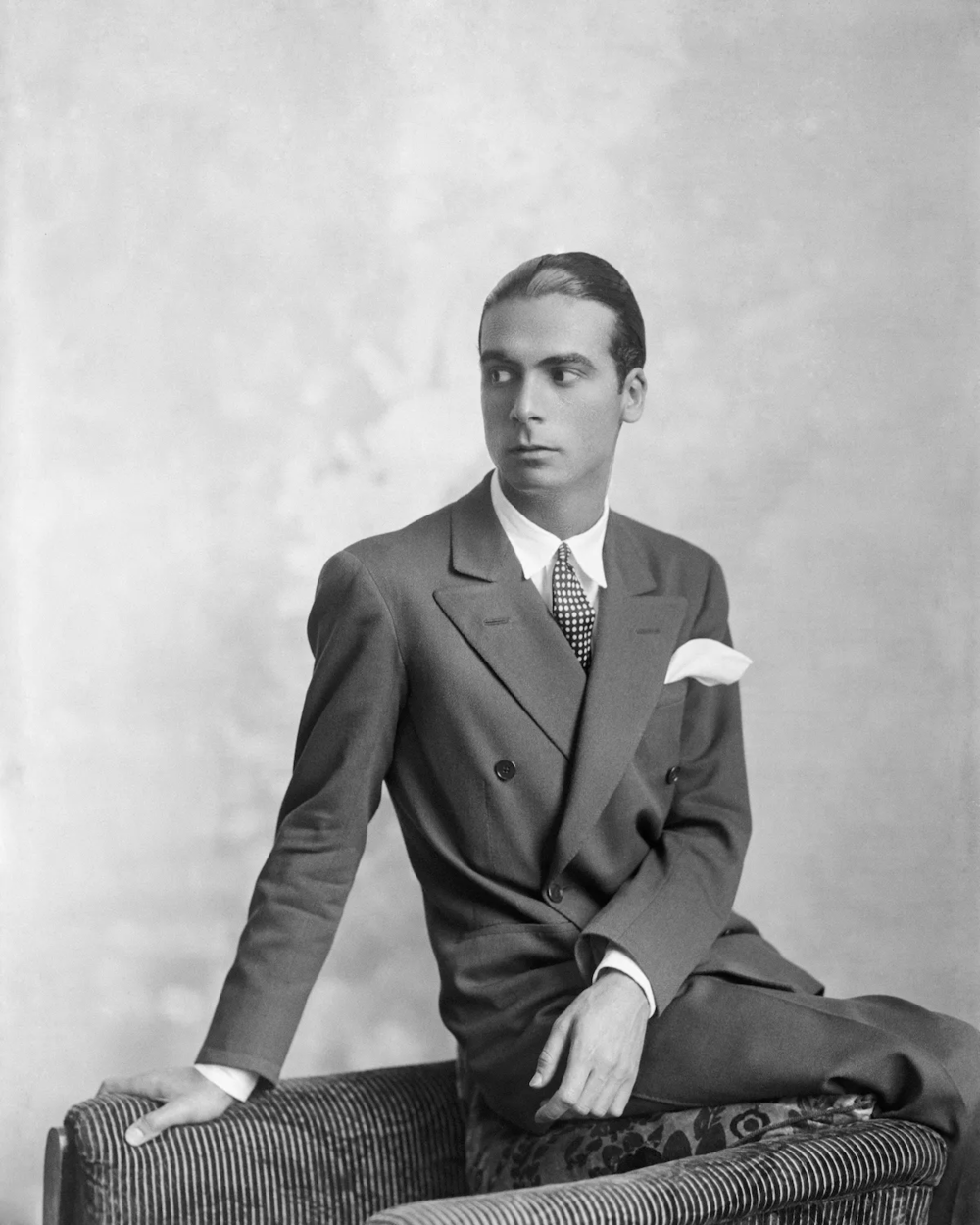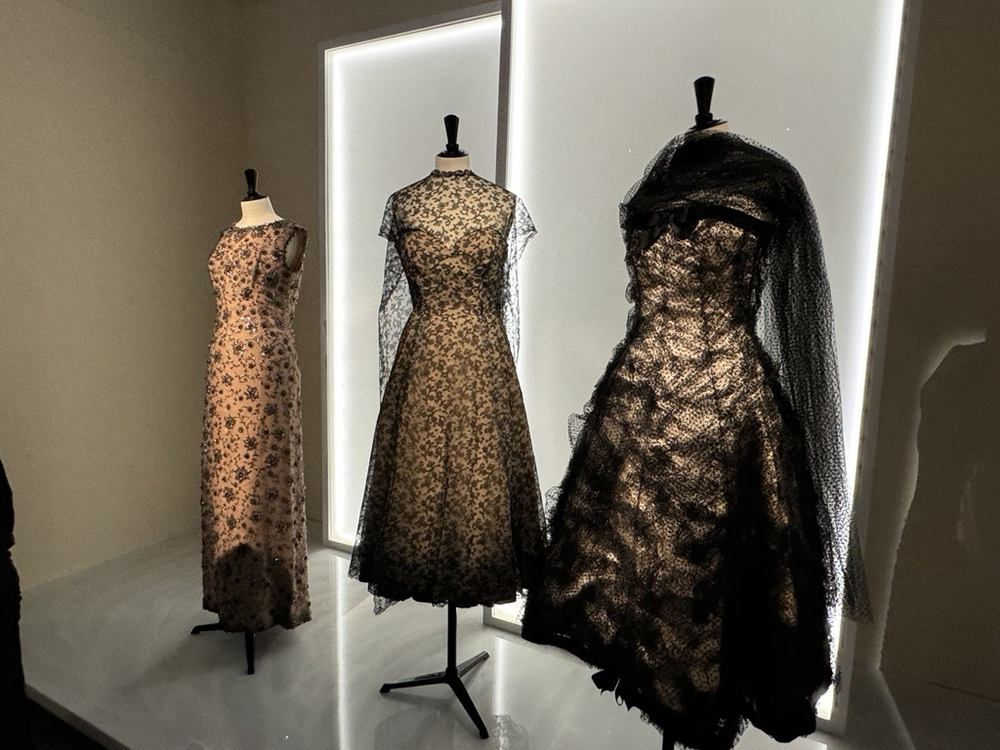
Caption
Cristóbal Balenciaga, photographed in 1927
Credit: Boris Lipnitzki / Roger-Viollet, courtesy of SCAD FASH Museum
Long before the Balenciaga label made recent headlines with teddy bears togging harnesses and Kardashians in athletic wear sashaying beneath Hollywood palms, the brand's namesake set the pace for exquisite cuts and craftsmanship in austere Barcelona, Madrid and Paris studios.

Cristóbal Balenciaga, photographed in 1927
A new archival exhibition at SCAD FASH in Atlanta demonstrates the brilliance of Cristobal Balenciaga, the Spanish designer and reluctant couturier who influenced Hubert de Givenchy, Coco Chanel, and Pierre Balmain. It also draws a clear distinction between the hand-sewn couture of the mid-20th century and the splashy campaigns of modern day corporate fashion houses.
Cristóbal Balenciaga: Master of Tailoring offers a rare view into the artist's methods and aesthetic in a display of 30 garments from the 1940s to the 1960s and worn by the likes of Elizabeth Taylor and Dolores del Rio.
Running through June 2, the show is organized by Rafael Gomes, creative director of SCAD FASH museums, in partnership with Fondation Azzedine Alaïa, which provided pieces from the late Tunisian designer’s personal collection of Balenciaga's work.
Prior to the show's opening, SCAD held a panel talk in its salon with curators Gaël Mamine, head of collections of Fondation Azzedine Alaïa, Gaspard de Massé, head of archives at Balenciaga, and Gonzalo Parodi, director of Parodi Costume Collection.
The discussion revolved around the future of archiving for brands. Given that Balenciaga started the company himself in 1919, closed it in 1968 and died in 1972, the fashion house makes a good case study for how much — or little — brands owe to the history and talent of the designer whose name is on their label.
The Balenciaga brand remained mostly inactive in the industry until 1986, was purchased and is currently owned by the fashion conglomerate Kering group.
Panel participants also mentioned Cristóbal Balenciaga’s famous shunning of hype in the fashion world, saying “his sense of distance was an ethical position” and his approach was “like a velvet rope.”
But the show's biggest revelations are found not only in Balenciaga’s skillful tailoring and “thick Spanish black [silhouettes] that hit you like a blow” (according to a 1938 Harper’s Bazaar story), but also in the reverence of his admirer, Alaïa, who collected Balenciaga's work while dressing the supermodels of the 1980s and 1990s in his own creations. Alaïa died in 2017.

Balenciaga was known for his use of black fabric, lace, embroidery, beading and unique silhouettes. The 'Master of Tailoring' exhibition at SCAD FASH Atlanta demonstrates the designer's skills.
"I was fascinated by the dresses by Balenciaga, the master,” the Fondation’s website quotes Alaïa as having said. “Clients would bring Balenciaga dresses to me and ask me to shorten the hem: I would ask them if I could keep the dresses and make something new for them instead. It was around that time that I had started to be aware of the fact that fashion was a cultural heritage."
Cristóbal Balenciaga: Master of Tailoring offers a stark contrast between past and present and begs attendees to consider the differences between the man and the brand. Understanding the distinction furthers the importance of preservation for future generations.
